 |
[14] People and Culture |

Beyond paper money, Echizen's rich supply of technique is valuable to art nationwide, from writing and drawing paper to artistic paper.
Here, you can learn about the distinguished paper makers who have earned the trust of artists nationwide, and been certified as Living National Treasures.
|

Echizen's Living National Treasures (Certified Traditional Craftsmen) |
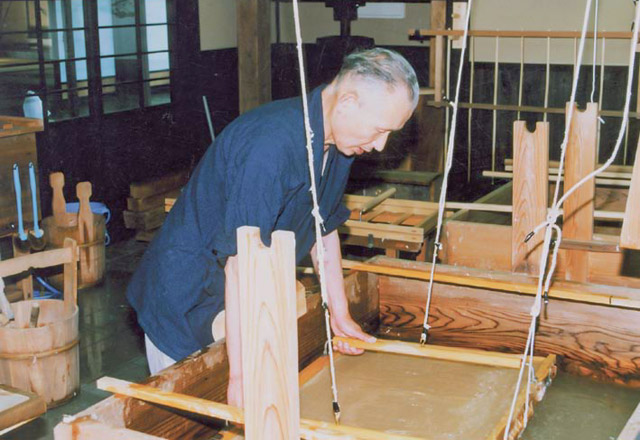
|
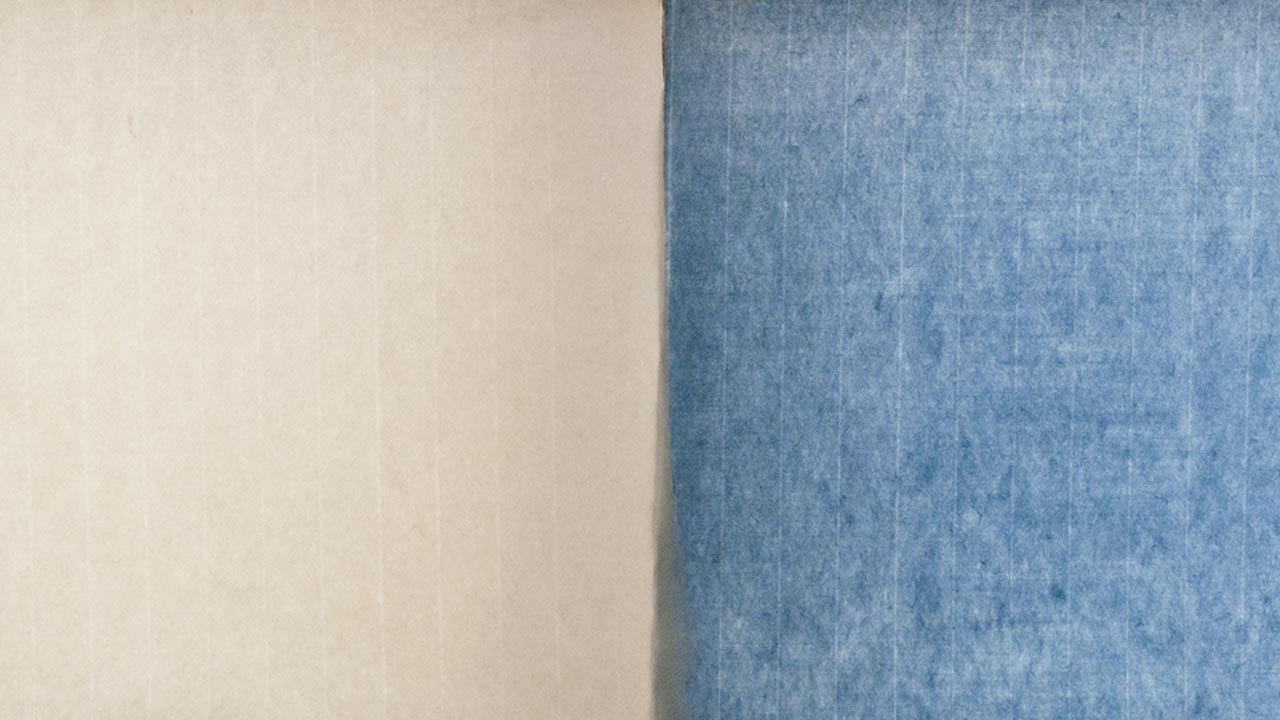
|
| The 9th IWANO Ichibe |
Product: Echizen kizuki hosho paper
Materials: Nasu kozo Paper Mulberry 100%
Echizenwashi hosho paper is a thick kozo paper that was originally used by samurai for writing down orders. The paper has a soft texture, and an extremely graceful and sophisticated feeling. It has the reputation of being the best woodblock printing paper when durability is required because it is able to withstand being over-printed 200-300 times. It is also used for writing, painting, or cleaning Japanese swords. The eighth generation papermaker Iwano Ichibe, who dedicated himself to making Echizen Kizuki hosho paper and his son, also named Iwano Ichibe, were both designated as holders of an Intangible Cultural Property, in 1968, and in 2000, respectively.
|

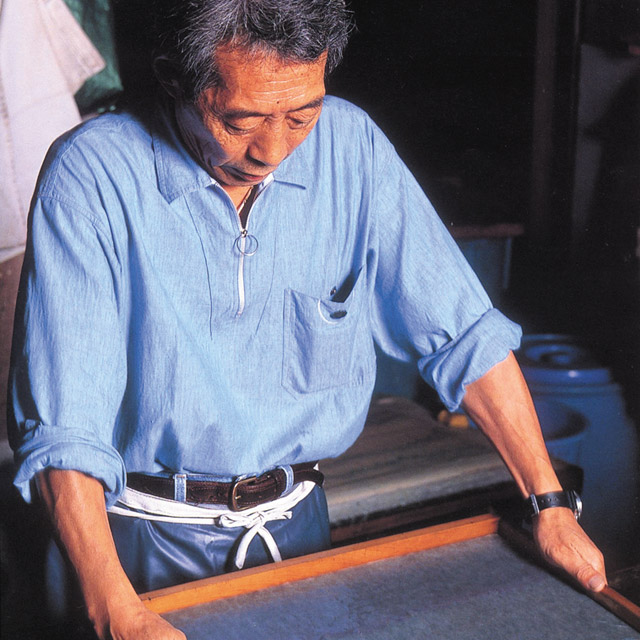
|
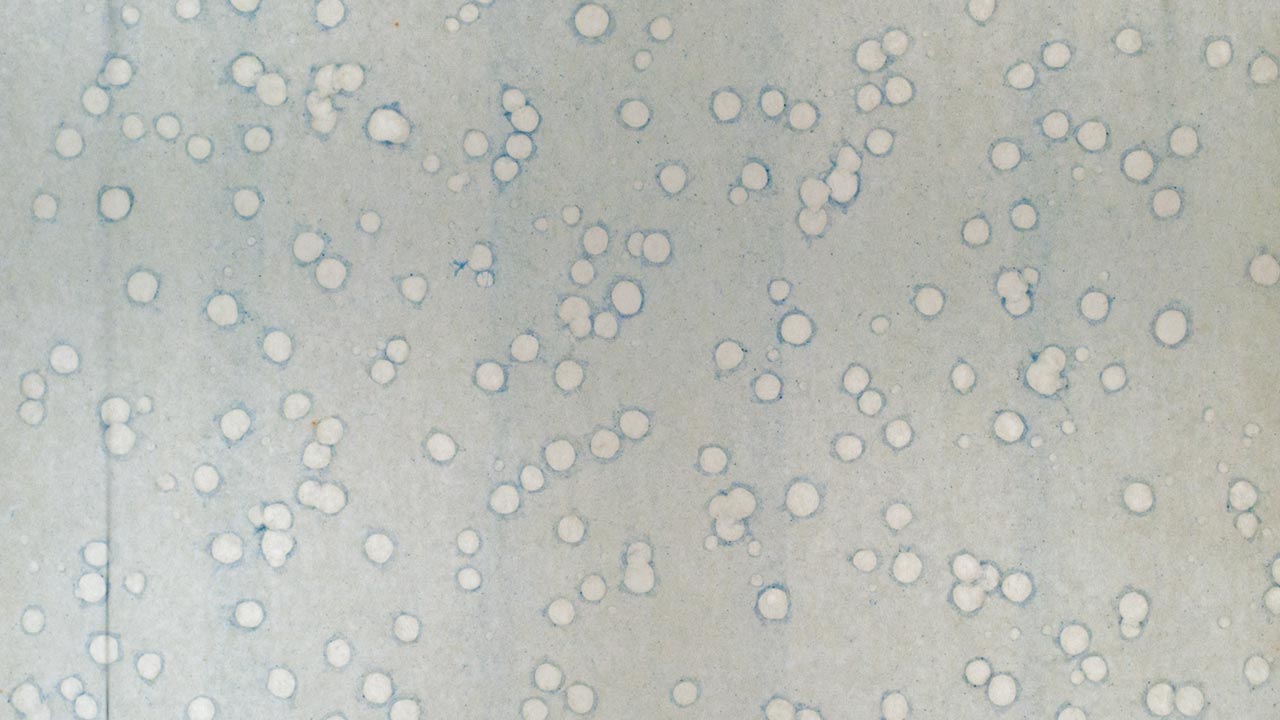
|
| The 3rd IWANO Heizaburo |
Product: Kumohada mashi paper
Materials: hemp, kozo Paper Mulberry
Kumohada mashi paper is a thick hemp paper for nihonga painting, which was created by Iwano Heizaburo the first. A mixture of hemp and kozo Paper Mulberry is made into a thick, elastic paper, so that the fibers are well entwined. Pigments adhere to it well, and colors show up to good advantage. Kumohada mashi paper, which is strong like hemp canvas, has been used as the substrate for some of the masterpieces of modern Japanese painting. The paintings on the partitions in the Mikagedo subtemple of Toshodaiji by Higashiyama Kaii, and Yakushiji temple's Daito Seiiki Hekiga painted by Hirayama Ikuo, both in Nara, were painted on this Kumohada mashi paper.
|

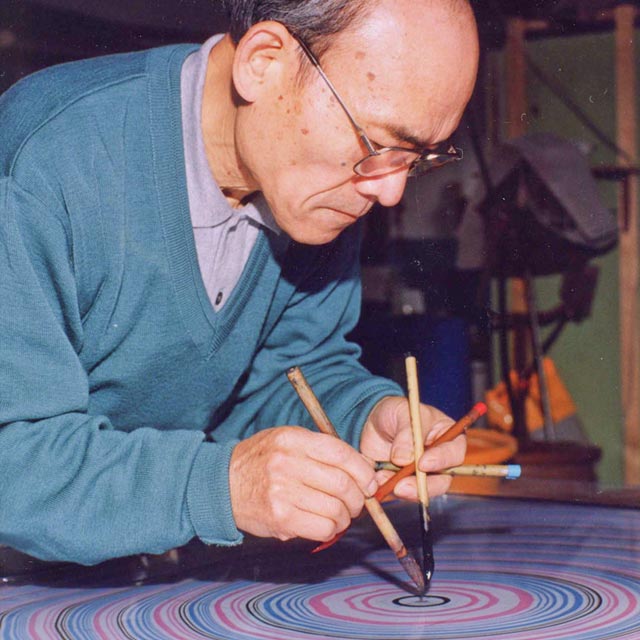
|
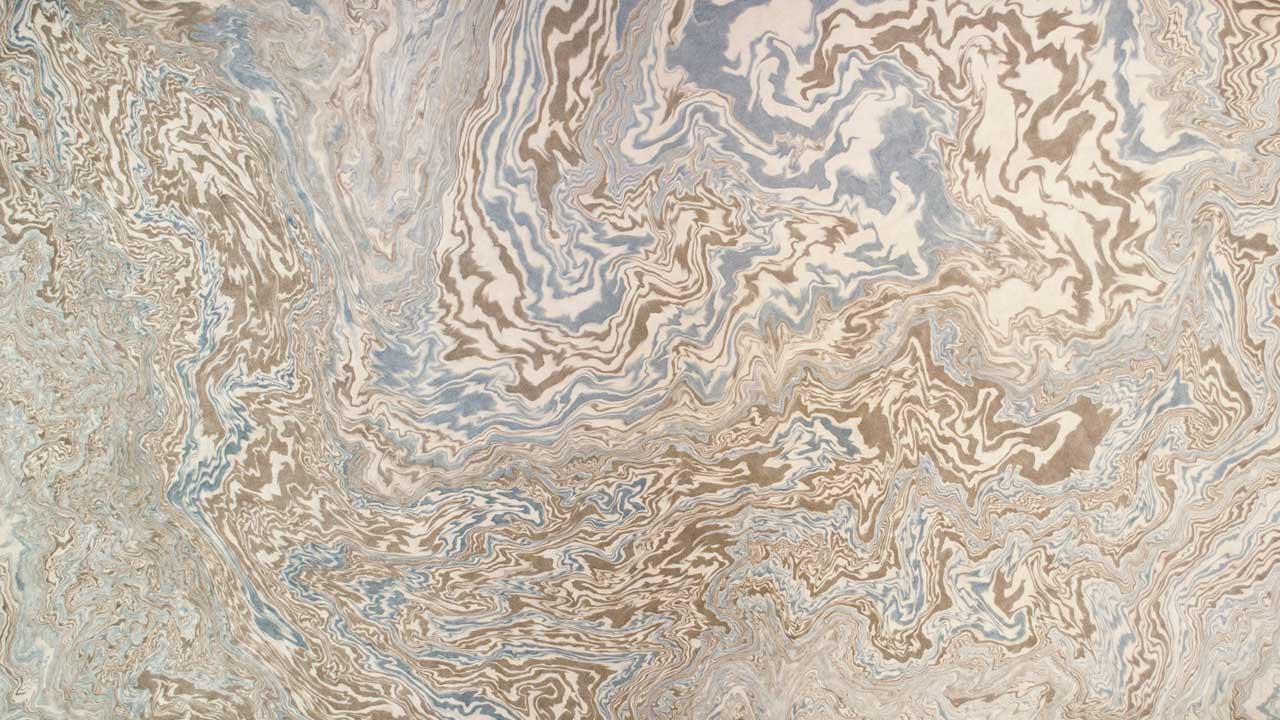
|
| FUKUDA Tadao |
Product: Suminagashi
Suminagashi has a long history. It was a paper used for Nishihonganjihon sanjurokuninkashu (a collection of poems edited in 1112). Water is put in a shallow vat, and the tip of a brush with sumi ink is touched on the surface. The center of this floating sumi circle is then touched with another brush containing a clear liquid resin, which causes the sumi to spread out in a large, thin circle with a clear center. This action is repeated until the desired number of sumi circles has been made. Ripples are made by blowing or fanning the surface, and then the pattern is transferred by laying a sheet of paper on the surface of water. The naturally created pattern is elegant and endlessly interesting. This paper has avariety of uses such as shikishi and tanzaku - both of which are used for writing poems, calligraphy and painting - ryoshi(general- purpose writing paper), book covers, endpapers, fusumagami(fusuma sliding door papper) and so on.
|

| YAMAZAKI Kichizaemon |
Product: Danshi paper
Materials: kozo Paper Mulberry
Danshi, in its early form, was kozo paper made on a coarse su that was dried by hanging it over rope, causing wrinkles. It is said that the technique for making special wrinkles on the surface developed during the Genroku era (1688-1704) on Edo period. Formely, a person's social status dictated the size of paper they were supposed to use. Otaka denotes the largest size danshi paper. This paper was used in the court, or by the shogun's and their families as high-quality official paper, or official paper for writing poetry. Along with Otaka there is chutaka, masataka, and kodaka. It is used in tea ceremony, and for thank-you letters, ceremonial wrapping, certificates, and other uses.
|

| OKI keiji |
Product: MO suisaigayoshi paper
Materials: wood pulp, hemp, cotton
At the beginning of the showa era(1926-1989) the initials of the maker of the paper, OKI Mohachi, were added as a watermark, and the paper was given the name MO paper. Ink color is good, and the paper surface is exceptionally strong. This widely used paper is considered best for watercolors. For oil painting, the charm of pigment-colored MO paper is that it allows for detailed work that would impossible on a linen canvas (due to its texture).
|

| Floor Map |
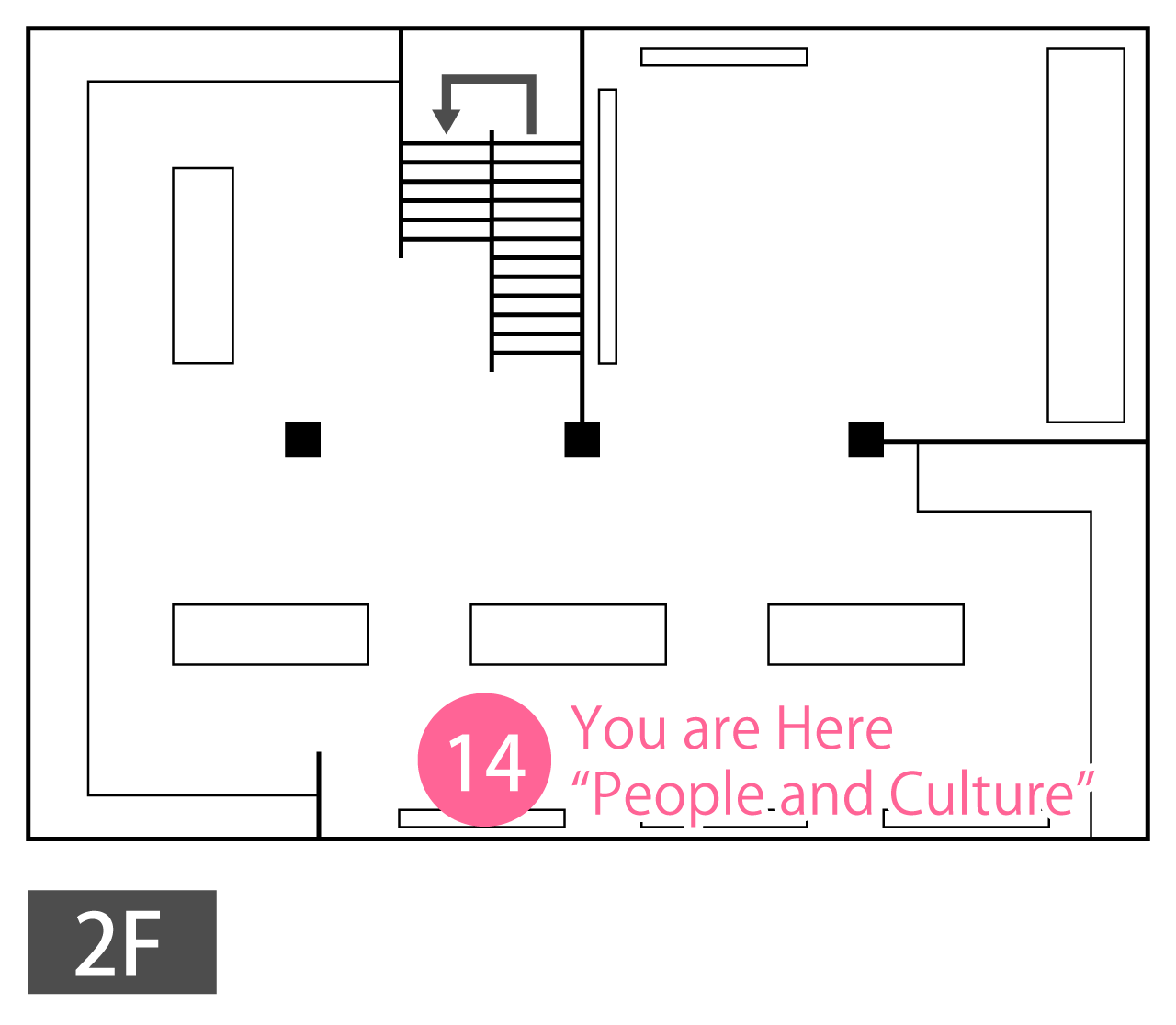
|

|



